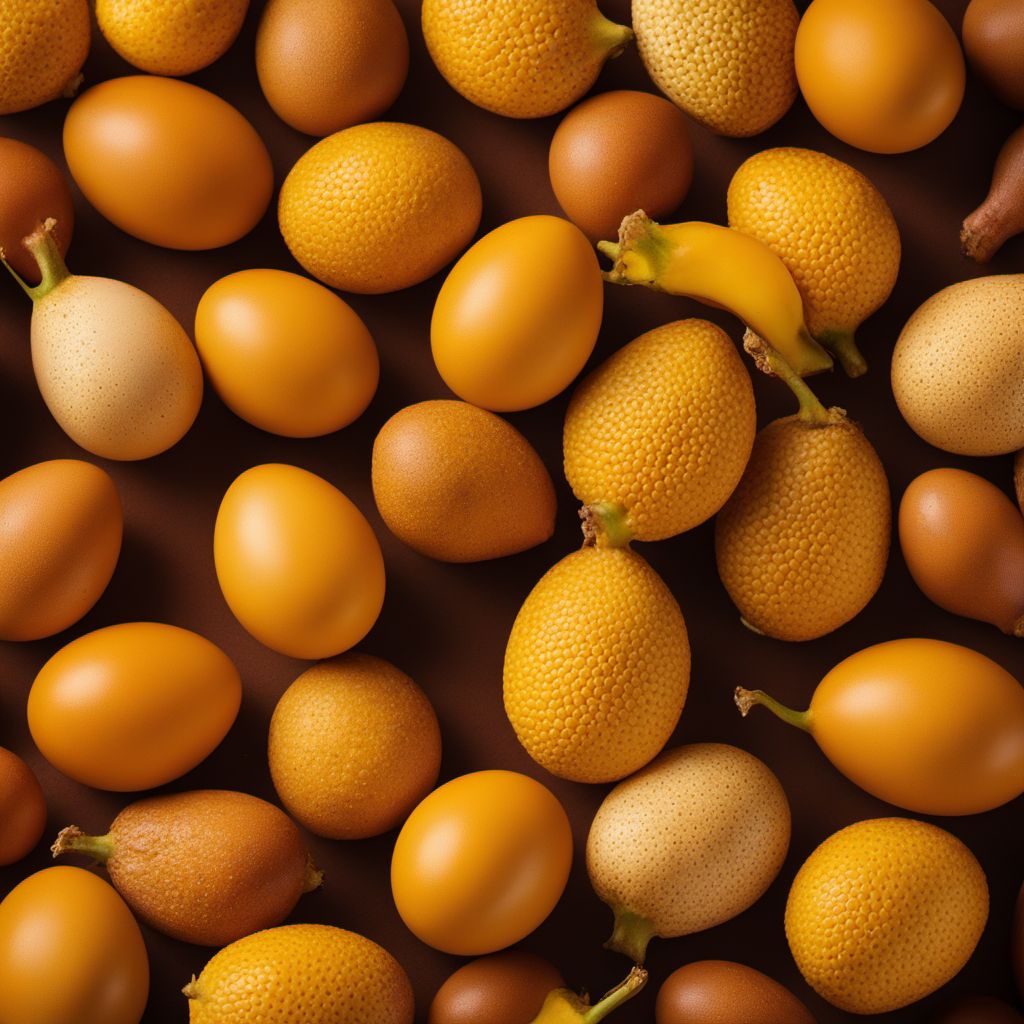
Ingredient
Yellow sapotes
Tropical Delight
Yellow sapotes, also known as Pouteria campechiana, are medium-sized fruits with a smooth and thin skin that ranges in color from pale yellow to golden orange. When ripe, they have a custard-like flesh that is buttery, smooth, and slightly fibrous. The flavor of yellow sapotes is reminiscent of a blend of mango, banana, and peach, with a subtle hint of vanilla. These fruits are often enjoyed fresh or used in various desserts and beverages.
Origins and history
Yellow sapotes are native to Central America and have been cultivated for centuries by indigenous communities. They hold cultural significance in Mayan and Aztec traditions, where they were considered a sacred fruit and used in religious ceremonies. Today, yellow sapotes are grown in tropical regions around the world, including Mexico, the Caribbean, and parts of Asia. They are highly prized for their unique flavor and nutritional benefits.
Nutritional information
Yellow sapotes are a good source of vitamins A and C, as well as dietary fiber. They also contain minerals like potassium and magnesium, which are essential for maintaining proper bodily functions. These fruits are relatively low in calories and fat, making them a healthy choice for those seeking a sweet treat. However, it is important to consume them in moderation due to their natural sugar content.
How to select
When selecting yellow sapotes, choose fruits that are firm yet slightly yielding to gentle pressure. Avoid fruits with blemishes, bruises, or signs of mold. The skin should be smooth and free from wrinkles. It is best to select fully ripe yellow sapotes for immediate consumption, as they do not continue to ripen once harvested. If the fruits are not yet ripe, they can be stored at room temperature until they reach the desired level of ripeness.
Storage recommendations
To maintain the freshness and quality of yellow sapotes, store them at room temperature until fully ripe. Once ripe, they can be stored in the refrigerator for a few days to prolong their shelf life. It is best to consume yellow sapotes as soon as possible after ripening to enjoy their optimal flavor and texture. Avoid exposing the fruits to extreme temperatures or direct sunlight, as this can cause them to spoil or lose their quality.
How to produce
Yellow sapote trees can be grown in tropical or subtropical regions with a warm climate. They require well-draining soil and regular watering to thrive. If you have the appropriate climate and space, consider planting a yellow sapote tree in your garden or backyard. With proper care and maintenance, you can enjoy a bountiful harvest of these tropical delights.
Preparation tips
Yellow sapotes can be enjoyed fresh by simply cutting them in half and scooping out the flesh with a spoon. The creamy texture and sweet flavor make them a delicious snack on their own. These fruits can also be used in various culinary creations, such as smoothies, ice creams, pies, and jams. The flesh can be pureed and added to desserts or used as a filling for pastries. Yellow sapotes pair well with tropical flavors like coconut, lime, and passion fruit, allowing for endless possibilities in the kitchen.
Culinary uses
Yellow sapotes are commonly used in tropical desserts and beverages. They can be blended into smoothies, milkshakes, or sorbets for a refreshing and creamy treat. These fruits can also be used as a topping for yogurt, pancakes, or waffles, adding a burst of tropical flavor. In addition, yellow sapotes can be incorporated into baked goods, such as cakes, muffins, and bread, to infuse them with a unique and exotic taste. Their versatility makes them a favorite ingredient in tropical cuisines.
Availability
Yellow sapotes are primarily cultivated in tropical regions, including Mexico, Central America, the Caribbean, and parts of Asia. They are commonly available in local markets and grocery stores in these areas. However, they may be more challenging to find in other regions due to their limited cultivation and perishable nature.

